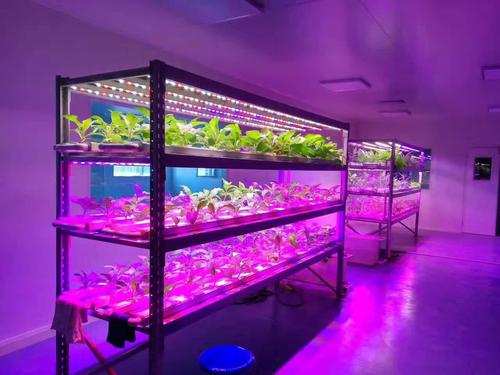Led in the field of plant growing also has the following characteristics: the wavelength type is rich and coincides with the spectral range built by plant photosynthesis and light morphology; the half width of spectrum wave is narrow, which can be combined to obtain pure monochromatic light and composite spectrum according to the needs; it can concentrate the light of specific wavelength to evenly irradiate crops; it can not only regulate the flowering and Fruiting of crops, but also control the plant height and plant height It can be used in multi-layer cultivation three-dimensional combination system to achieve low heat load and production space miniaturization; in addition, its strong durability also reduces the operation cost. Because of these remarkable characteristics, LED is very suitable for plant cultivation in controllable facility environment, such as plant tissue culture, facility horticulture and factory seedling, aerospace ecological life support system, etc. With the rapid development of protected horticulture area in China, plant lamps promote the light environment of plants and control lighting technology has attracted attention.

Plants rely on the energy of light for photosynthesis and grow, bloom and bear fruit. However, due to the ever-changing climate change and light variation in nature, the plants can not fully absorb the photosynthetic nutrition they need in different growth periods, which brings disadvantages to the growth, especially in the seedling stage. Therefore, scientific and reasonable artificial spectrum has created good absorption and reflection conditions for plant growth. The energy values in the blue and red light regions are very close to the efficiency curve of plant photosynthesis (especially for green plants), which is the best light source for plant growth.
In traditional agricultural production, ordinary electric light source is generally used to supplement light and different covering materials are applied. For example, monochromatic fluorescent lamp or color plastic film are used to change light environment to regulate the growth and development of plants in protected cultivation environment. Led plant growth lights are different from these measures, thus avoiding varying degrees of problems, such as lack of analysis of specific spectral components, resulting in impure light quality, inconsistent light intensity, near or even below the light compensation point of plants, and low energy efficiency of light sources. A large number of applications of LED in plant protected cultivation environment show that led can solve these problems, especially suitable for artificial light control plant facility cultivation environment.
